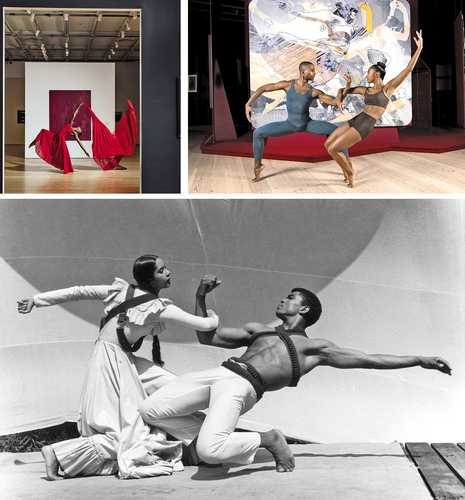Choirs of black spirituality from the southern United States resonate with the magnitude of the body in the exhibition Edges of Ailey, which reveals in a unique way at the Whitney Museum one of the most famous choreographers of the 20th century, whose 35th death anniversary (which will be December 1st) is commemorated.
I’m Alvin Ailey. I am a choreographer. I’m a black man whose roots are in the sun and the soil of the south
wrote one of the architects of modern dance and Afro-American culture.
Segregation and racism, admiration for women like Maya Angelou, Carmen de Lavallade, Katherine Dunham, Billie Holiday and the fight against HIV are some of the many topics to explore in the 5 thousand square meters that the museum located in Nueva York.
The exhibition focuses on Alvin Ailey (Texas, 1931-New York, 1989), his training stories, concerns and inspirations on the visionary path of his dance works and the creation of his company, in 1958, which also allows, until today, the training of generations of dancers.
Rarely seen objects from Ailey’s personal archive, such as interview recordings, performance images, diaries, letters, poems, choreographic notes, drawings and performance programs, are combined with paintings, photographs, music and an installation with screens that reproduce parts of the repertoire of the Alvin Ailey American Dance Theater company.
In this way, the personal and creative range is delved into by attending the exhibition that opened on September 25 and will remain at the venue next to the Hudson River until February 9, 2025.
In contrast to static contemplation, his way of seeing the life, work and legacy of Alvin Ailey incite movement and the senses. Along with the exhibition installed on the fifth floor, a complementary program is held with live performances of some of the choreographer’s most representative pieces, as well as dance classes for all audiences.
According to the New York museum, These elements form a historical narrative, provide a study of the constellation and unfold as a tribute to the life, career and scope of the legendary artist, his impact on the history of dance, black creativity and American culture.
.
Revelations, ballet created in 1960 when he was 29 years old, continues to resonate more than six decades after its premiere. The signature piece by Ailey and his company takes up the spiritual songs of gospel and blues to narrate the American experience of blackness; fervently explores the deepest places, pain and most sacred joy of the soul
.
This creator and activist, who carried out his career in periods of economic difficulty and in the midst of the fight for human rights, died in 1989 due to complications from HIV. Among his ideas, he defended that dance is for everyone. Dance comes from the people and should always be returned to the people
.
The immersion in the Whitney initially addresses the blood memories
(blood memories) that arose from his childhood experiences in rural Texas, alongside his mother, Lula Cooper, as pickers in the cotton fields. The origin was defined by migration, poverty and racism. These years were the basis of his choreographies. He saw an enduring spirit, a source of pride and creativity, with a deep sense of humanity in the people and places he remembered.
.
At age 10 he was part of the great black migration and moved with his family to Los Angeles. The stage dazzled him at 14, but he realized that there were no black people in the ballet. However, Katherine Dunham and Lester Horton allowed him to pursue his dream of becoming a dancer and choreographer.
The southern imagination expanded along with that of the Caribbean, Brazil and West Africa, and would incorporate diasporic entanglements into his dances through movement, ritual, culture and mythology, all instigated and imagined through the ingenuity and inventiveness of black creators and communities
.
Curator Adrienne Edwards celebrated that after six years of dreaming, planning and research, this spectacular production was brought to light. Audiences now have the opportunity to learn Ailey’s story. It is not an easy task to preserve the legacy of someone of such cultural magnitude. We have done more than pretend to have the same imagination, brilliance, generosity, rigor and audacity as him.
.
